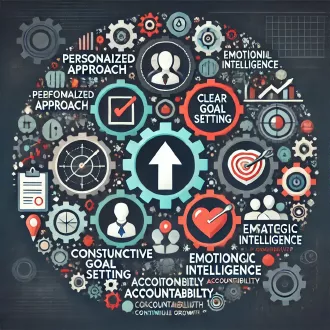Transcription Motivation model
The ability to motivate is an often underestimated skill. A skilled coach understands that motivation can fluctuate and that, in times of discouragement or insecurity, it is essential to provide support. Motivation is a crucial element in the field of leadership and teamwork coaching, as it plays a key role in performance and goal achievement.
While there are multiple factors that influence human performance, it is valuable to address motivation as one of the fundamental pillars to achieve positive results in the team and the organization.
Self-determination theory
The aspect of motivation has been the subject of reflection and analysis both from a personal perspective and in team management. Surely, in your role as a manager or leader, you have considered how to impact the motivation of the individuals around you, including your team members. Numerous books and theories have been developed on this topic, reflecting its relevance in the work environment.
Some of the most popular motivation models and theories are:
- Maslow's hierarchy of needs theory.
- Maclelland's three-factor theory.
- Expectations theory.
- Herzberg's dual factor theory.
- Edwin Locke's goal setting theory.
- Stancey Adams' equity theory.
- Edward L Deci and Richard M. Ryan's self-determination theory.
Here we will explain a little more about the latter approach, although we invite you to investigate the others so that you can draw your own conclusions on the subject.
One of the most widely accepted models is the Self-Determination Model, developed by Edward L. Deci and Richard M. Ryan. This model holds that motivation derives from three basic psychological needs:
- Competence Need: people have a natural tendency to seek challenges and to demonstrate competence and skills in different areas. Satisfying this need translates into increased intrinsic motivation, as people seek to improve and overcome obstacles.
- Need for autonomy: Autonomy refers to the feeling of having control and choice over our actions. When people feel they have the freedom to make decisions and act according to their own values and preferences, their motivation increases.
- Need for social relatedness: The need to relate to others and feel connected is fundamental to motivation. Meaningful and supportive social relationships contribute to a greater sense of belonging and personal satisfaction.
The self-determination model also distinguishes between two types of motivation:
- Intrinsic Motivation: intrinsic motivation refers to the internal drive that arises from personal satisfaction and a sense of accomplishment. People engage in activities for the sheer pleasure and satisfaction they derive from them.
- Extrinsic Motivation: Ex trinsic motivation is based on external rewards, such as recognition, money, or status. While it can influence behavior, extrinsic motivation tends to be less enduring than intrinsic motivation.
Hierarchy of motivations
Many researchers have also referred to motivation as a pyramid. At the base of the pyramid are the more superficial and tangible motivations, such as material rewards and recognition. As we move up the pyramid, we move into more internal and personal motivations, such as the search for purpose and connection to transcendent meaning. This hierarchy provides a deeper understanding of how individuals motivate themselves and how different sources of motivation can interact and coexist.
At the spiritual level, the search for purpose and meaning in life becomes a powerful driver. Religion, community, family and other aspects of life shape this dimension. Although it is not a matter of determining which belief is correct, it is undeniable that the search for meaning and purpose is inherent in the human condition and, therefore, is a factor that influences motivation.
Continuing in this motivational pyramid, the next level addresses social interaction. The need to belong to a group, to work in a team and to build relationships is at the heart of this dimension. Social bonds, whether in a work or personal environment, play a vital role in motivation and
motivation




